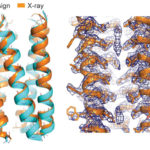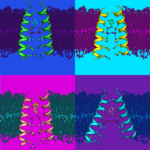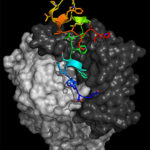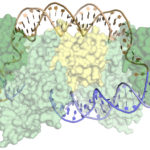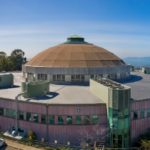Membrane proteins that connect a cell’s inner workings with the outside world are essential for life and genetic mutations that affect their structural integrity or biological function are the cause of many diseases. Given their importance, researchers are interested in ascertaining the general physics principles underlying how membrane proteins fold and stabilize their molecular structures. Using high-resolution protein crystallography at the Advanced Light Source (ALS) Beamline 8.3.1, scientists from UCSF characterized designed membrane proteins to better understand the forces that stabilize these large, complex structures.
Read the ALS Science Highlight.
